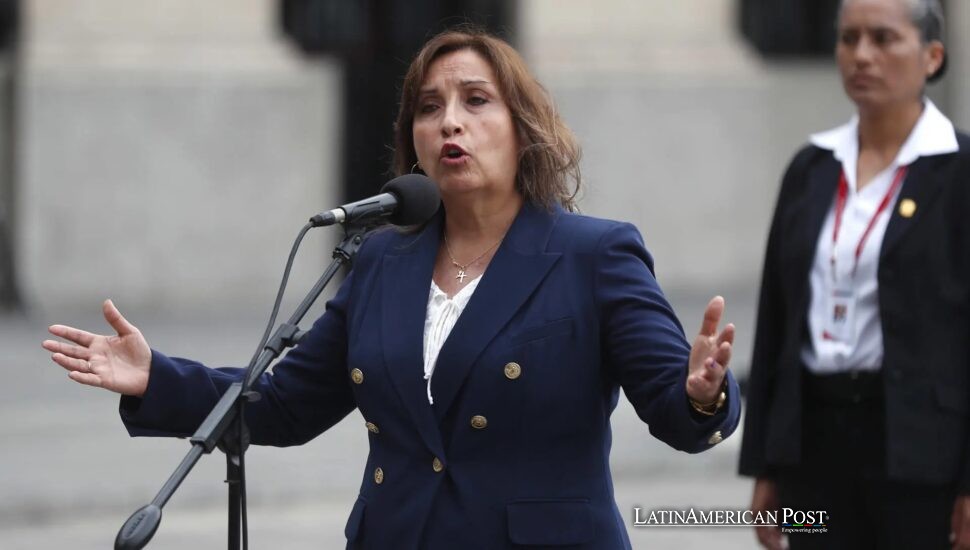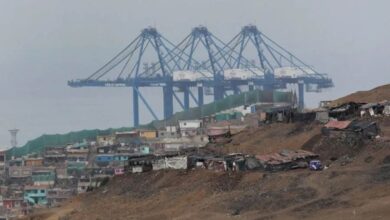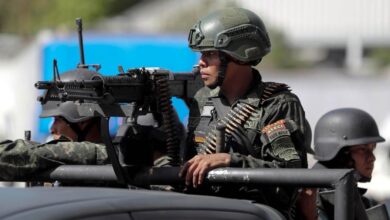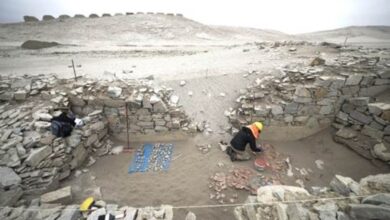Peru’s Endless Crisis: Another President Falls, and the Republic Holds Its Breath

Peru woke to another presidential fall. Congress expelled Dina Boluarte on grounds of “permanent moral incapacity” and swore in its own leader. The vote ended one chapter of chaos but exposed a deeper sickness—of legitimacy, security, and governance itself.
A Constitutional Tool Turned Habit
Impeachment in Peru was once meant as a last resort, a constitutional valve against tyranny or fraud. It has become a reflex. In a late-night session that felt more like ritual than justice, 122 of 130 lawmakers—left, right, and everything in between—voted to oust Boluarte. The accusation, “permanent moral incapacity,” was as vague as ever, a political crowbar wielded whenever Congress wants to pry open the presidency.
By dawn, José Jeri, the congressional leader, stood at the podium wearing the red-and-white sash. Peru, which has no vice president, once again improvised its succession. The spectacle has become familiar. Six leaders have fallen since 2018. Three former presidents are in prison. One, Pedro Castillo, lingers in memory like a ghost after his failed 2022 attempt to dissolve Congress triggered his own downfall—and Boluarte’s rise.
Outside, crowds chanted, flags waved, and firecrackers cracked in the humid air. Inside homes, few felt triumph. The public mood has shifted from outrage to exhaustion. Peru’s impeachment carousel has turned into governance by adrenaline, a country perpetually starting over.
This latest fall isn’t about one leader’s mistakes. It is about a system that has made removing presidents a substitute for reforming institutions. When every crisis ends with another impeachment, democracy stops being a negotiation and becomes a demolition.
From Promise to Pariah in Record Time
Boluarte began as a compromise—Peru’s first woman president, inheriting power after Castillo’s chaotic self-coup. She promised calm. Within months, calm became crisis.
Her approval rating plunged to 2–4%, among the lowest on earth. Scandals stuck like glue. The press dubbed her downfall “Rolexgate,” after luxury watches she wore to official events. A cosmetic surgery left her accused of dereliction for failing to name a temporary replacement. But what truly sealed her fate was blood.
In early 2023, police and soldiers crushed protests by Castillo supporters across the highlands. More than fifty people were killed. Videos of troops firing into crowds looped on TV screens for weeks. Investigators opened cases for genocide, qualified homicide, and serious injuries. Even if courts later clear her, the funerals remain a stain no speech can erase.
When she doubled her salary while crime rates soared, public disgust hardened into contempt. In Lima, gang shootings have become nightly news. Thursday’s attack at a concert, leaving several dead, was the final metaphor: a government losing control of both the streets and the story.
Boluarte skipped her own impeachment hearing. Lawmakers voted while she slept. In a late broadcast, she called the decision “political theater,” insisting she had “governed for unity and order.” But unity had evaporated. Peru had already moved on.
Crime, Crowds, and a Congress No One Trusts
To outsiders, Congress might seem the responsible adult in this drama. In truth, it is just the other half of the problem. Its approval ratings rival Boluarte’s. Peru’s legislature is fragmented, unpopular, and addicted to impeachment as a shortcut to power.
Without strong parties or ideological coherence, lawmakers treat survival as policy. When the presidency becomes toxic, removal offers quick catharsis and temporary control. It’s the political equivalent of deleting the group chat when arguments get messy—reset without resolution.
Meanwhile, the streets keep boiling. Protests have rolled through the calendar since late 2022, morphing from pro-Castillo marches into broader rage over poverty, insecurity, and corruption. The Lima concert shooting wasn’t just a tragedy; it was another reminder that the state can no longer guarantee safety. Gangs thrive, police morale sinks, and trust erodes.
In that vacuum, “permanent moral incapacity” feels less like constitutional doctrine and more like a coping mechanism—an institutional panic button that substitutes symbolism for problem-solving.
The cycle is self-perpetuating: instability weakens governance, which deepens distrust, which fuels more instability. Congress and the presidency destroy each other’s credibility, then campaign as if they weren’t both architects of the wreckage. Peru is stuck in an ouroboros of outrage, devouring its own legitimacy.
The risk now is déjà vu with shorter intervals. An interim government will promise “stabilization.” Congress will promise “oversight.” Neither commands real faith. When no one believes in the rules, every crisis becomes a test of who can shout louder.
What Real Stabilization Would Require
There is a path out of this spiral—but it is slower and less glamorous than power struggles.
First, accountability. The deaths of 2023 cannot vanish into legal fog. Transparent prosecutions, public hearings, and reparations for families would signal that justice isn’t optional. Peru’s democracy cannot keep burying its victims and calling it reconciliation.
Second, certainty. Early elections are set for April 2025, but Peruvians have learned to distrust promises. Those dates must be nonnegotiable, protected by binding timelines, international oversight, and clear electoral rules. Voters must stop being passengers and start steering again.
Third, reform from within. Congress has to confront its addiction to impeachment. The vague phrase “moral incapacity” should be redefined or replaced, with higher thresholds for use. Lawmakers should be forced to present evidence, not just momentum. At the same time, strengthening political parties—through transparent financing, internal democracy, and alliances—could shift politics from personalities to platforms.
Fourth, restore safety without militarizing fear. Peru’s crime wave won’t break under curfews and slogans. It demands coordinated policing, anti-corruption drives inside security forces, and serious investment in education and jobs—especially in the southern and Andean regions scarred by last year’s repression. Security without legitimacy becomes repression; legitimacy without security is a slogan. Peru needs both.
And finally, tone. What this exhausted nation needs is not another savior in a sash, but leaders who admit their limits. Congress must abandon its theater of vengeance. The interim president must resist the lure of populist grandstanding. The next election cannot be about who saves Peru; it must be about who rebuilds it.
Boluarte’s removal may feel like justice, but justice without reform is only ritual. The celebration outside Congress will fade into the same bitter quiet that followed the last five ousters. Peru has confused punishment for progress.
A Fragile Future, Again
As dawn broke over Lima, the palace lights burned late. Inside, José Jeri rehearsed speeches about unity. Outside, Peruvians stared at the news with weary disbelief. Another president gone. Another promise to restore faith. Another start that already feels like an ending.
The truth is brutal: Peru doesn’t just have a leadership crisis—it has an addiction to crisis itself. The system keeps eating its own presidents because nothing stops it. If the country wants to escape the spiral, it must trade spectacle for structure, outrage for institution-building.
The solution sounds almost dull: build institutions that fail slowly instead of leaders who fail spectacularly. But dull is what Peru needs—a politics that disappoints predictably rather than implodes dramatically.
Also Read: Trinidad and Tobago and Venezuela Share a Tightening, Perilous Strait
For now, the presidential palace has a new occupant. The question that echoes through its halls is the same that haunts the streets outside: How many more times can a nation survive saving itself?




